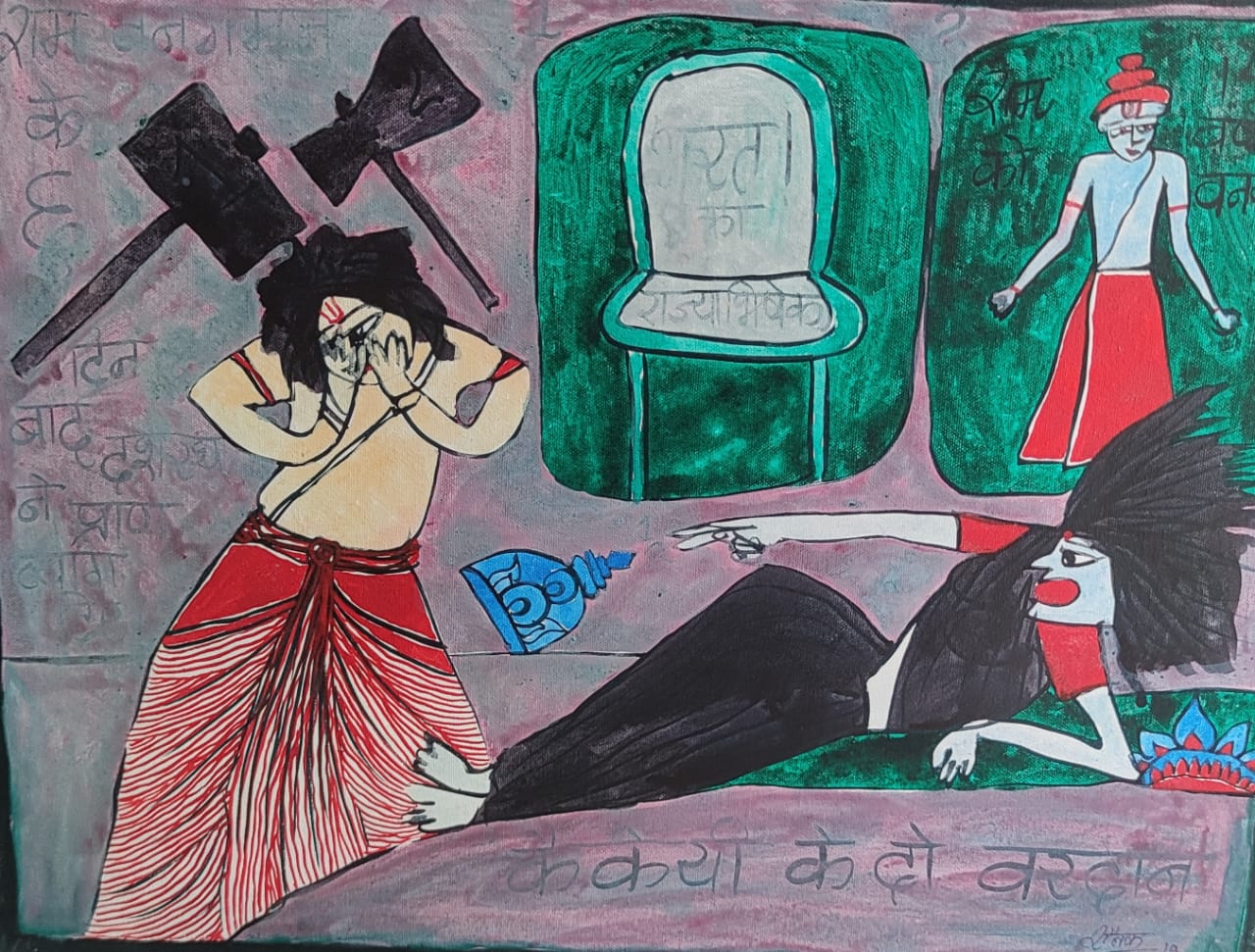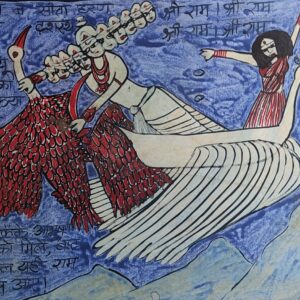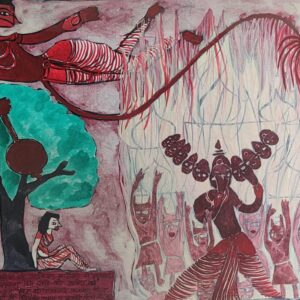“Kaikeyi ke Do Vardan” – A Bold Visual Satire by Rounak Rai
In this painting titled “Kaikeyi ke Do Vardan”, artist Rounak Rai captures one of the most emotionally charged and politically significant moments in the Ramayana: when Queen Kaikeyi demands her two promised boons—Bharat’s coronation and Ram’s 14-year exile to the forest. However, Rai presents this not as a moment of royal diplomacy, but as a dark psychological theatre, layered with irony, tension, and powerful visual metaphors.
—
Visual Breakdown:
Kaikeyi, drawn reclining on a green background like a manipulative force of destiny, points her finger with chilling authority—her pose echoing the commanding, cold entitlement of a ruler rather than a grieving mother. Her expression and body language scream power intoxication.
Dasharatha, shown with black axes looming over him, clutches his face in despair. The axes are not just props—they symbolize the cutting of dharma and heartbreak. His red eyes and disheveled hair embody helplessness, guilt, and trauma.
The empty throne marked “राम का राज्याभिषेक” (Ram’s Coronation) serves as a silent witness to what could have been—a poignant metaphor for stolen destiny.
In the green panels beside the throne, we see Ram with calm yet resigned body language—ready for exile. His posture contrasts the chaos around him, symbolizing sacrifice and stoic dharma.
The use of symbolic text like “राम वनवास”, “कैकेयी के दो वरदान”, and “5 दिन बाद दशरथ ने त्यागा प्राण” reinforces the narrative documentation technique that Rai often blends into his visual storytelling—almost like a graphic folk mural.
—
Rounak Rai’s Style & Thematic Depth:
Rai’s visual language is instantly recognizable—bold outlines, limited yet symbolic color palettes (reds, blacks, blues, greens), and layered compositions. But what makes his work extraordinary is the psychological intensity and the way he transforms mythological events into commentaries on power, ego, and dharma.
In this piece, he doesn’t portray Kaikeyi as a one-dimensional villain, but rather as a symbol of ambition twisted by insecurity and influence. The surreal exaggeration of body language, tilted throne, and vacant expressions allude to a world where personal motives hijack cosmic order.
—
Conclusion:
“Kaikeyi ke Do Vardan” is not just a painting of a turning point in Ramayana—it’s Rounak Rai’s unapologetic meditation on moral collapse, power games, and fate. In fusing myth with modern expressionist-folk art, Rai invites viewers to look beyond the narrative—and into the emotional architecture that shapes epic destinies.




Reviews
There are no reviews yet.